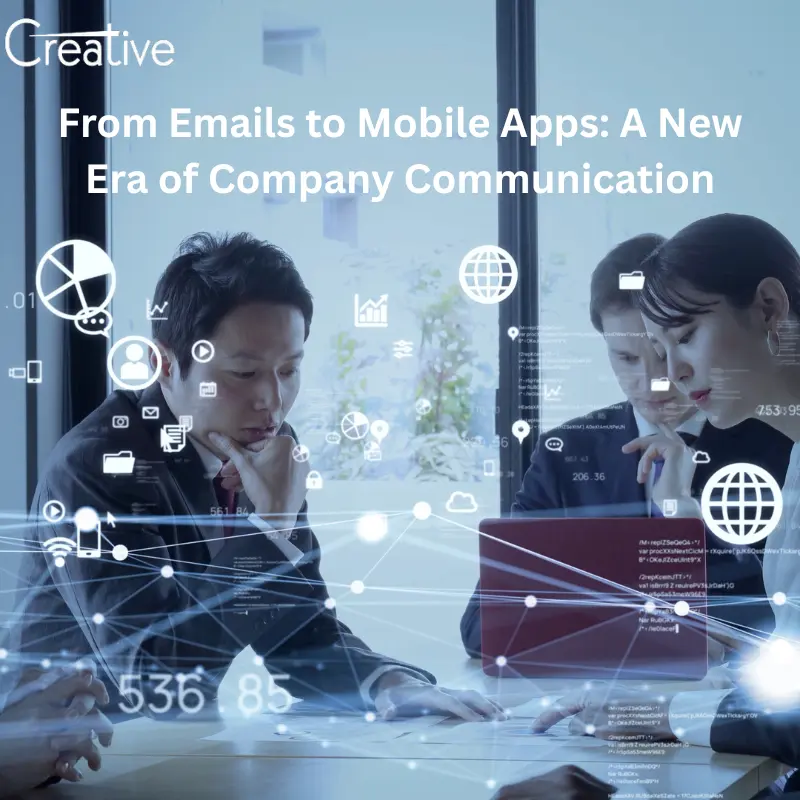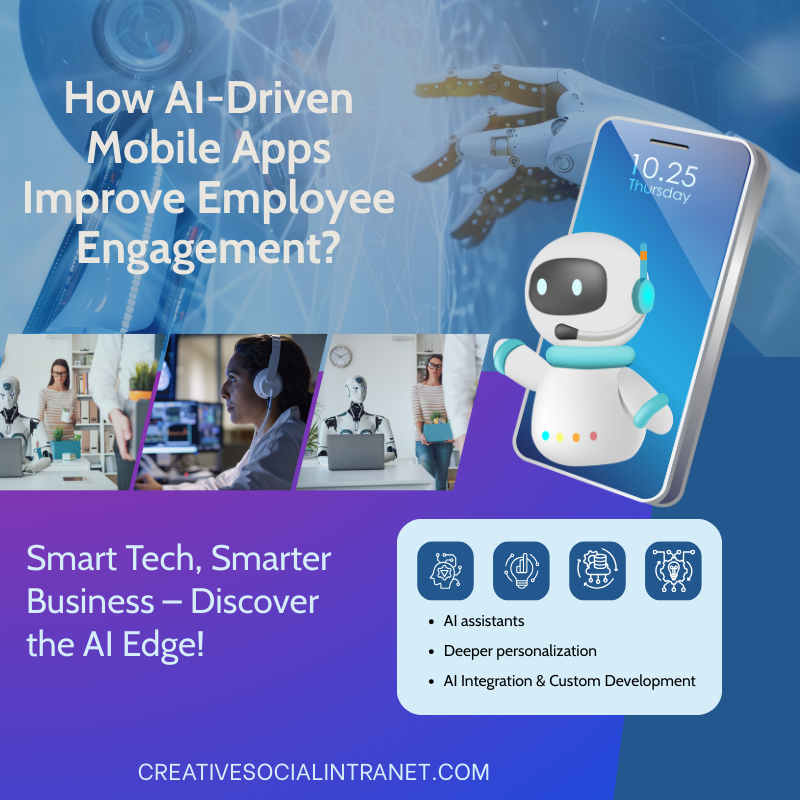What should an intranet include?
When strategically planned, an intranet becomes the digital hub of a company, promoting efficiency, cooperation, and communication. An intranet should consist of a carefully chosen collection of elements that complement the goals of the company and the requirements of its employees to guarantee that it functions as a dynamic and necessary tool.
Let’s examine the key components that an intranet needs to have to support organizational success.
User-Friendly Interface:
All staff members may navigate and utilize the system with ease thanks to an intuitive and user-friendly interface. Decreases learning curves, increases user adoption, and improves the intranet experience overall.
Centralized Document Repository:
This is a single location where policies, procedures, and documents are kept. Simplifies the process of gaining access to vital data, guaranteeing that staff members always have the most recent and pertinent papers available.
Communication Tools:
Instantaneous communication tools such as chat, forums, and announcement boards. Encourages prompt and open communication, leading to a knowledgeable and connected workforce.
Areas for Collaboration:
Specific spaces for project management, file sharing, and team collaboration. facilitates the smooth exchange of ideas and resources, encourages collaborative projects, and speeds up teamwork.
Directory of Employees:
A thorough directory including contact details and employee bios. Facilitates communication, encourages networking, and facilitates connections between staff members and other members of the company.
Tools for Project and Task Management:
Task organization, deadline setting, and project progress tracking are all done with integrated tools. reduces bottlenecks, guarantees effective project management, and boosts total productivity.
Accessibility on Mobile Devices:
Creating a mobile-friendly intranet to meet the demands of employees working remotely or constantly on the road. increases adaptability, guarantees constant connectivity, and facilitates a mobile workforce.
Programs for Employee Recognition:
Venues for praising and honoring the accomplishments of staff members. Raises spirits, improves engagement among staff, and fosters a happy work environment.
Resources for Training and Development:
Providing employee development resources, e-learning modules, and training materials. promotes lifelong learning, upskilling, and employee support.
Mechanisms for Employee Feedback:
Routes for gathering opinions, recommendations, and insights from staff members. encourages open communication, includes staff members in decision-making, and points out areas in need of change.
Options for HR Self-Service:
They are allowing employees to access HR-related information and tasks through self-service choices. assures a smooth HR experience, lessens administrative hassles, and empowers workers.
Social Media and Connections:
Areas for casual conversation, sharing of ideas, and fostering a feeling of community. improves relationships between staff members, encourages teamwork, and promotes a collaborative atmosphere.
Combining Business Tools with Integration:
Smooth interaction with current corporate software and tools. reduces interruptions to workflow, boosts productivity and guarantees a coherent digital environment.
Features of Event Management:
Tools for planning and supervising corporate gatherings. fosters a dynamic workplace environment, motivates staff involvement, and fortifies team ties.
Showcasing Corporate Culture:
Areas to showcase the missions, values, and accomplishments of the organization. strengthens company identity, synchronizes workers with common objectives, and sustains corporate culture.
Showcasing Corporate Culture:
Areas to showcase the missions, values, and accomplishments of the organization. strengthens company identity, synchronizes workers with common objectives, and sustains corporate culture.
Internal Announcements & News:
A special area with news, updates, and significant announcements about the firm. improves corporate communication, increases transparency, and informs employees.
Tools for Reporting and Analytics:
Utilizing analytics software to monitor intranet performance and usage. provide information for platform optimization, user engagement, and ongoing enhancement.
Safety Procedures:
Strong security measures to protect private company information. reduces security concerns, fosters employee trust, and assures data integrity.
Resources for Employee Well-Being:
Resources about health, support services, and employee well-being. demonstrates concern for the organization, encourages work-life balance, and raises employee happiness.
Possibilities for Customization:
Allowing for customization based on the demands of the company. enables the intranet to be customized to meet particular needs, guaranteeing its efficacy and relevance.
These components create a dynamic, engaging, and collaborative digital workplace in a well-rounded intranet. Organizations may fully utilize the potential of an intranet and promote an innovative, productive, and employee-satisfied culture by strategically combining these components.
Explore Creative Social Intranet
Boost Understanding with Quick Answers
Our Latest Intranet News and Articles

From Emails to Mobile Apps: A New Era of Company Communication
In the past, emails were the backbone of corporate communication. They were formal, reliable, and convenient for exchanging information within organizations. However, as the modern workplace evolved, with hybrid teams, instant messaging, and real-time collaboration, emails began to reveal their limitations. Slow response times, long threads, and cluttered inboxes made communication less efficient and more fragmented. Today, we’ve entered a new era where mobile apps and intelligent intranet systems, such as Creative Social Intranet, are transforming the way companies communicate, connect, and collaborate. They offer speed, accessibility, and engagement that emails can’t match, paving the way for smarter, more connected … From Emails to Mobile Apps: A New Era of Company Communication

How Mobile Apps Revolutionize Internal Communication?
In today’s digital-first workplace, communication is the lifeblood of every successful organization. With teams spread across locations, departments, and even time zones, keeping everyone informed and aligned has become a major challenge. Traditional methods, such as emails, bulletin boards, or intranet portals, are no longer sufficient to engage modern employees who are constantly on the move. This is where mobile apps come into play — transforming how companies share news, policies, and events with their workforce. At Creative Social Intranet, we’ve seen how mobile communication tools have revolutionized internal engagement by making information accessible, timely, and interactive. A well-designed mobile … How Mobile Apps Revolutionize Internal Communication?

How AI-Driven Mobile Apps Improve Employee Engagement?
Employee engagement has become a top priority for modern organizations. In an era where hybrid work, remote collaboration, and digital communication dominate the workplace, traditional engagement strategies are no longer enough. Employees expect seamless communication, instant access to information, and personalized experiences that help them feel valued. This is where AI-powered intranet software, combined with mobile apps, plays a transformative role. At Creative Social Intranet, we specialize in building intelligent platforms that not only connect employees but also empower them with tools that keep them engaged, productive, and motivated. Why Employee Engagement Matters More Than Ever? Engaged employees are the … How AI-Driven Mobile Apps Improve Employee Engagement?
